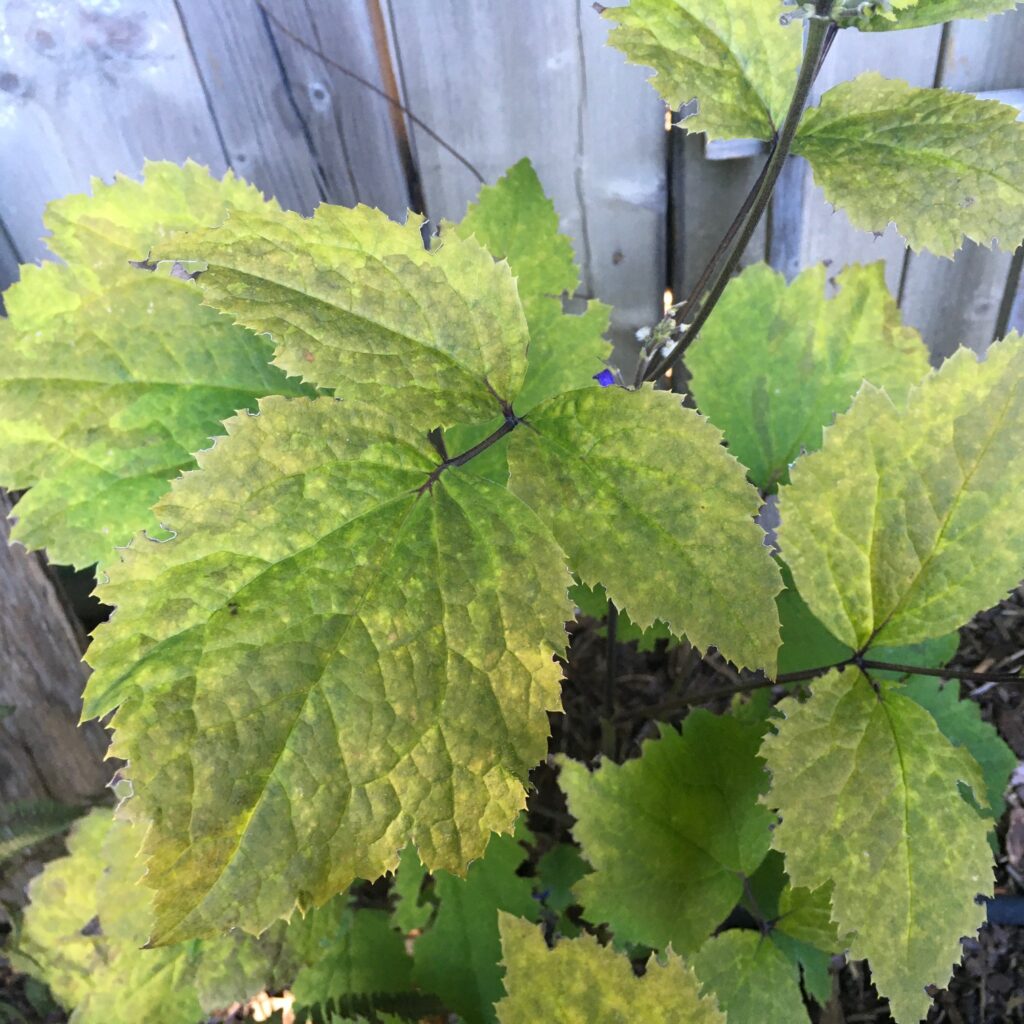
I was told this was a China Purple Bush Clematis however when researching I thought the flower looked more like a tube clematis; maybe there is little or no difference? My issue is the leaves.It’s about 30″ high, gets about 4-5 hours sun, plenty of water (sprinkler system) and the soil tests neutral or very slightly alkaline. The person who gave me the plant has hers in full shade and the leaves are dark green. Mine has leaves that look almost variegated pale green with a pale red in it. Is my plant getting too much sun or water or is it happy this way?
Thank you for contacting the Toronto Master Gardeners about your clematis, which I believe is Clematis heracleifolia ‘China Purple’. Clematis tubulosa ‘China Purple’ is a synonym for C. heracleifolia ‘China Purple’, and one of its common names is tube clematis. This is a bush clematis, meaning that it has a spreading habit (and might therefore need some support), unlike many other clematis which climb. C. heracleifolia prefers full sun to partial shade, and moist, well-drained soil. Perhaps in a full shade spot spot, it is not flowering at its best. There is more information about C. heracleifolia here.
Abnormal yellowing of leaves is called chlorosis, and there are many reasons for it. One of the most common causes is moisture stress, from either too much or too little water. Since you have a sprinkler system, it could be that your plant is getting more water than it needs. The soil for C. heracleifolia should be moist but not wet, and it must be well-drained so that the roots are not sitting in water and deprived of oxygen. If your soil is heavy clay, it would probably benefit from the addition of a layer of compost applied to the surface of the soil. This will help to improve the soil structure over time, and will also help to retain moisture so less watering will be required.
I think the other possibility for your yellowing leaves is a nutrient deficiency in your soil. Specifically, I am thinking it might be lacking in nitrogen, but this would need to be confirmed by a soil test. Basic soil testing kits are available at garden centres, or you could have your soil tested by a lab. Here is a list of accredited labs from the Ontario Ministry of Agriculture, Food and Rural Affairs. Typically, when there is a nitrogen deficiency, the upper leaves are light green, lower leaves are yellow, and bottom (older) leaves are yellow and shriveled. Leaves sometimes have pink tints. Since nitrogen is easily washed out of soil, mulching with compost provides a steady trickle of nitrogen that can help to stabilize levels.
Best of luck with your clematis !

